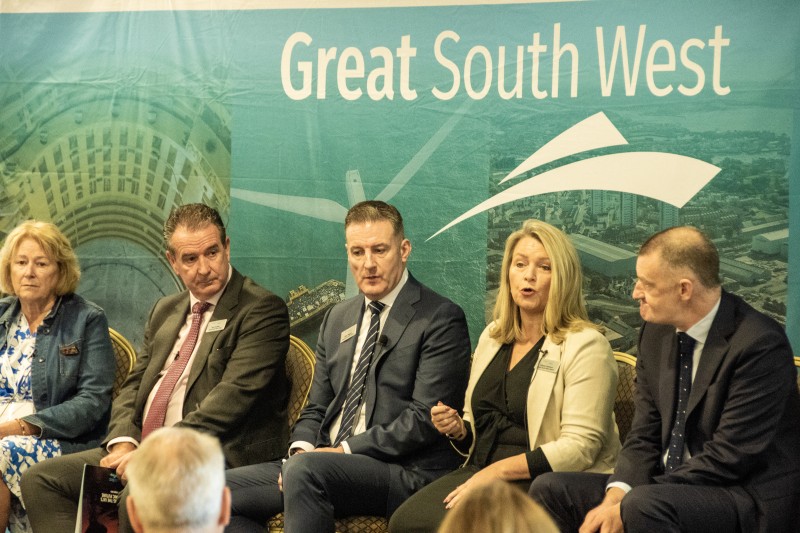New Year Parable*
There was an island with 10 inhabitants. They each spent their daylight hours trying to catch a fish for their own supper. Their daily economic output (GDP) was 10 fish, at best, and their average productivity was 1 fish. Their annual GDP was 3,650 fish and GDP per head was 365 fish.
One day, one of the people built a boat and a friend made a net. After perfecting the skills of using them, these innovations meant they could fish deeper waters, catch more fish and do so more quickly. The island’s daily output potential was now, say, 28 fish per day: 10 each for the boat and net pair and 8 in aggregate for the other residents. GDP per head was now 2.8 fish daily, or 1,022 per annum. Through innovation, skills acquisition and investment, the island had raised its productivity and, in aggregate, become “better off”.
Because the two innovators now had surplus stock, other members of the community could specialise too, and exchange of different outputs became possible. A third person went into farming, a fourth into clothing, a fifth into useful gadgets/tools and a sixth into building. These entrepreneurial activities meant they could trade between themselves for the fish and other things they needed or wanted. Markets were born. Overall output went much higher, perhaps to the equivalent of, say, 64 fish per day (6 people x10 and 4 people x1) with productivity up further per day and per annum.
Next, seeing they were producing more fish and other ‘stuff’ than they needed, a seventh person, who had copied how to build and sail a boat, took the surplus output and traded it with neighbouring islands for things the ‘originals’ didn’t have. The islanders’ competitiveness was increasing with net exports higher, pushing up its output and income/wealth further.
The remaining three residents, however, were now almost unemployed. They did not really need to go fishing anymore. A particularly vocal one of them said, “this is not fair. What we need to do is have central resources to distribute some of the benefits of growth to the less fortunate members of our community”. This struck a chord with enough for this eighth person to be chosen (elected) to ‘govern’ the distribution process over the island. The ninth person was hired by the eighth to help to provide public services – a civil/lawyer service for all, paid for by ‘taxes’ on the productive, private citizens.
In time, as the levels and depth of economic activity increased in line with efficiency, the island brought in a form of money with ‘central’ banking to make exchange more efficient. Meanwhile, the tenth person, who was relatively old and unfit, was allowed to retire: the first pensioner dependent on the ‘state’: a ‘state’ that was itself dependent on the private activity of the majority being efficient and effective, producing a ‘taxable’ surplus.
Because the island was doing ‘better’ than its neighbours, it started to attract migrants to its shores. The newcomers learnt how to provide more goods and services of various kinds. Then, tourists started to arrive willing to ‘spend’. The resultant increase in the scale and diversity of island output allowed advances in labour productivity in the private sector and expansion of the ‘government’ role into health, housing and education, and into security (police and defence).
The pressure of monetary growth sometimes threatened to push up prices (inflation) and the government accumulated some public debt based on private ‘savings’. This paid for common ‘investments’ – services or infrastructure, such as roads and waste clearance. If this occurred before the income to pay for them had been generated, debt needed to be raised. Growth was getting more complex, fluctuating over time. Some began to worry about “boom and bust” and “living beyond their means” over the ‘economic cycle’.
Hence, a ‘mixed’ economy was born, with everyone ostensibly better off because of the increases in productivity and invention across different sectors, technologies, and places. Of course, there were risks. Some of these were natural, such as storms, floods and pandemics. Some were caused by the people themselves, including pollution, crime and excess debt. The danger was that future generations would forget how the system got started and maintained: its strengths in solving problems and creating value from individual learning and effort and its dependence on the population’s productivity. The debate continued between those who wanted to increase GDP and those who wanted to share it out differently.
Higher productivity was key to the island’s development and offered the best way to mitigate, adapt or remove uncertainty and risk. From the start, investment, innovation, skills, entrepreneurship, and competitiveness were the five driving forces of progress for all whilst the rule of law, trust and equity were the social and political glues, holding society together.
They all lived happily ever after, … As long as economic activity did not impinge on their demographics and natural environment (depleted fish stocks?), real growth potential stayed strong.
New Year Reality
Key UK Economic Data
| RGDP (%ch Q3 2023) | -0.1 | CPIH (%ch on yr Dec) | +4.2 |
| ...production (%m/m Nov) | +0.3 | Unemployment (% rate 3m to Nov) | 4.2 |
| ...services | +0.4 | SW activity PMI (index Dec) | 51.3 |
| ...construction | -0.3 | SE activity PMI | 50.5 |
RGDP = real gross domestic product CPIH = consumer inflation including housing
PMI = purchasing managers’ index- survey of regional activity. Sources ONS & SPGlobal
As the table above shows, UK activity was mostly flat in the second half of 2023. Inflation was still well above target and unemployment was a little higher. The “misery” index (8.4 – inflation plus unemployment) dropped from a peak but was still painful. Forecasts for the UK economy remain weak. Accompanying the recent Autumn Statement, the Office for Budget Responsibility (OBR) lowered the UK’s growth potential from a weak 1.8% per annum to a feeble 1.6%. A strong and growing economy would want this annual rate of output increase to be nearer to 2.5%.
These British islands need to grow faster, driven by improvements in the five productivity factors – investment, innovation, skills, entrepreneurship, and competitiveness. The Treasury’s measure to permanently expense investment against tax will help but is not enough. A £2 trillion+ UK economy is a difficult behemoth to turn around without significant long-term private investment. (UK investment in physical capital is about 17% of GDP, well below rates elsewhere, e.g. USA 21%, France 24% and Ireland 28%.) It may take several parliaments to get where we want to be.
To help business to increase its productivity, the UK fiscal approach must become more strategic. Treasury/Business Department growth strategies should focus on key parameters – tax reform, utility supply and socio-economic resilience, moving us away from what has been called the “austerity trap”. As Martin Wolf recently said in the FT, “neither endless fiddling nor ill-considered leaps into the unknown, such as Brexit, work.” What is needed is a strategic, market-based, supply-side plan that is supported by a large consensus of islanders and can incentivise business to maintain investment in people and products and processes into the long term.
*Inspired by a piece by Brian Wesbury, Chief Economist of First Trust, Chicago



